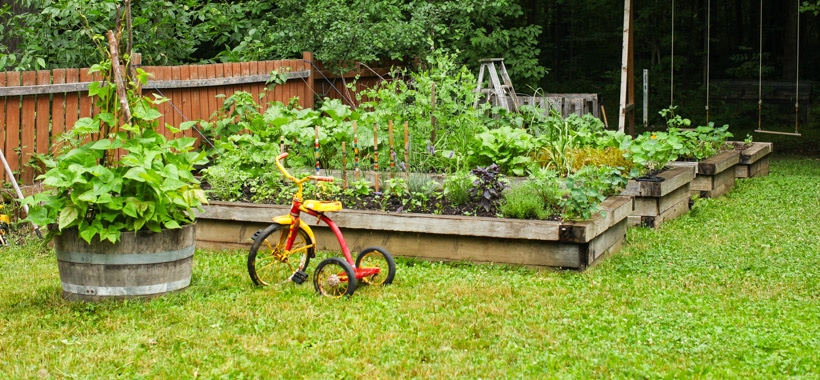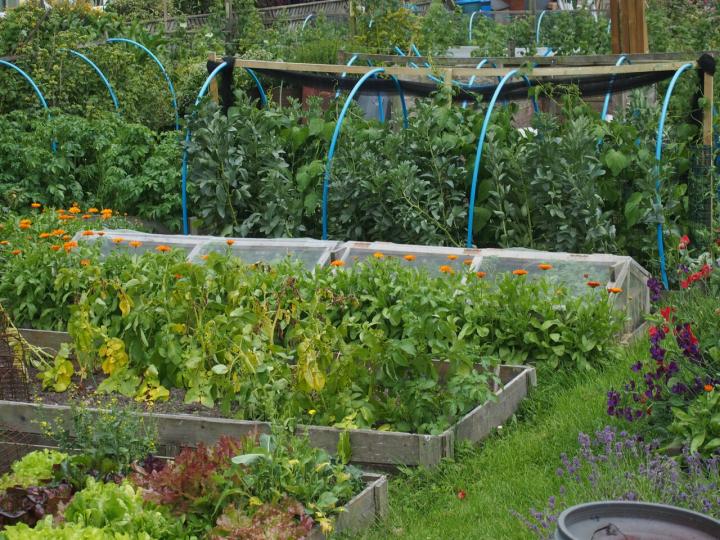Learn About the Best Practices for Homestead Gardening at Any Skill Level
Learn About the Best Practices for Homestead Gardening at Any Skill Level
Blog Article
Discover Important Tips for Effective Horticulture Techniques and Practices
Horticulture, frequently viewed as a straightforward pastime, includes a variety of strategies and practices that can substantially affect the end result of your efforts. By prioritizing vital aspects such as dirt wellness, effective watering techniques, and proper plant choice, garden enthusiasts can develop a flourishing community that supports lively development. In addition, recognizing the subtleties of parasite monitoring and seasonal upkeep can further enhance productivity. Numerous enthusiasts overlook essential information that can make or break their gardening success-- exploring these forgot facets may reveal the trick to growing a growing garden.
Comprehending Dirt Health And Wellness
Dirt health and wellness is a basic element of effective gardening, as it straight influences plant growth, vitamins and mineral availability, and community equilibrium. Healthy dirt is identified by an abundant biodiversity of bacteria, raw material, and a well balanced pH level, which with each other create a setting for plant growth.
To understand soil wellness, one should consider its physical, chemical, and organic buildings. The texture and structure of dirt affect its capability to maintain moisture and nutrients, while the chemical structure figures out the availability of vital components like nitrogen, potassium, and phosphorus. Routine dirt screening is essential to evaluate these aspects, permitting garden enthusiasts to make informed decisions relating to modifications and plant foods.
Moreover, promoting biological activity within the soil is important for preserving its health and wellness. Practices such as composting, plant turning, and the usage of cover crops can enhance microbial diversity, enhance nutrient cycling, and decrease soil erosion. By prioritizing soil health, gardeners not only optimize plant growth but also add to a lasting ecological community, ensuring that their horticulture techniques are durable and ecologically liable with time.
Reliable Sprinkling Strategies
Making certain that plants obtain the proper amount of water is important for their health and development, specifically when paired with a solid foundation of dirt wellness (Homestead Gardening). Efficient watering techniques can significantly influence plant vigor, decreasing water wastage and advertising ideal development
One basic technique is deep watering, which encourages origins to grow much deeper into the dirt, enhancing dry spell resistance. This technique commonly includes sprinkling less frequently but in bigger quantities, permitting wetness to permeate the root zone completely. Timing is additionally vital; early morning is the optimal time to water, as it decreases dissipation and enables vegetation to dry throughout the day, minimizing condition dangers.
Furthermore, employing compost can aid maintain dirt wetness and regulate temperature level, more helping reliable watering practices. Utilizing a drip watering system can likewise offer targeted dampness straight to the roots, ensuring that water reaches where it's most needed while preserving sources.
Keeping an eye on rains and dirt moisture levels can assist adjustments in your watering schedule, making sure plants obtain regular hydration without over-saturation. By adopting these reliable sprinkling methods, garden enthusiasts can foster a successful atmosphere for their plants to flourish.
Plant Selection and Placement
How can the appropriate plant option and critical positioning transform a garden hop over to here into a flourishing community? When selecting plants, consider variables such as environment, soil type, and sunshine direct exposure. Homestead Gardening.
Strategic placement involves preparing plants according to their development routines and needs. Taller plants should be placed at the back of borders to stop shielding shorter plants. Additionally, organizing plants with comparable water and light requirements can boost their growth and reduce competitors for resources.
Incorporating a variety of plants not only includes aesthetic appeal yet likewise advertises biodiversity, drawing in advantageous pests and pollinators. Think about the seasonal changes in your yard; choose a mix of annuals, evergreens, and perennials to guarantee year-round passion.
Finally, bear in mind to examine the fully grown size of plants prior to planting to prevent overcrowding and make sure adequate air circulation. Thoughtful plant choice and tactical positioning create a harmonious setting, allowing your yard to prosper while reducing obstacles.
Pest and Condition Management
Effective insect and illness monitoring is vital for preserving a healthy garden ecological community - Homestead Gardening. A proactive technique, incorporating cultural, biological, and chemical strategies, can dramatically decrease the effect of parasites and diseases on your plants

Biological controls, such as introducing advantageous bugs like ladybugs or predative mites, can keep bug populations in check without hurting the atmosphere. Furthermore, preserving plant health and wellness with appropriate watering, fertilization, and pruning will bolster their resilience versus conditions.
When treatment is needed, choose for targeted chemical therapies, making certain to adhere to application standards to reduce damage to non-target organisms. Constantly focus on lasting methods, as they promote lasting yard health and wellness and environmental balance. By incorporating these methods, gardeners can efficiently manage illness and pests, ensuring growing plants and an efficient garden.

Seasonal Maintenance Practices
During each period, applying targeted maintenance practices is crucial for optimizing yard health and wellness and efficiency. In springtime, concentrate on soil prep work by screening pH levels and including needed amendments. This is additionally the suitable time to apply plant foods and compost to retain dampness and reduce weeds. Routinely inspect arising plants for pests and conditions.
As summer season techniques, ensure appropriate watering while checking for indications of stress and anxiety or illness. Trim back overgrown plants to motivate air blood circulation and decrease moisture around vegetation. Learn More Here This practice not just boosts plant wellness but likewise advertises flowering and fruiting.
With the arrival of autumn, it's time to plan for winter season. Tidy up dropped leaves and debris to avoid parasite infestations, and think about growing cover plants to enrich soil health and wellness. This period is additionally perfect for splitting perennials and growing spring-flowering light bulbs.
Conclusion
Successful gardening hinges on the integration of audio methods in soil health and wellness, watering, plant choice, insect monitoring, and seasonal upkeep. By focusing on dirt testing and microbial diversity, using reliable watering approaches, and choosing proper plants, gardeners can create growing ecological communities.
By focusing on vital elements such as dirt wellness, efficient watering approaches, and proper plant selection, garden enthusiasts can produce a flourishing ecosystem that sustains lively growth. By focusing on soil wellness, gardeners not just enhance plant growth yet also add to a sustainable ecosystem, making sure that their gardening techniques are durable and environmentally liable over time.
Taller plants ought to be placed at the back of borders to stop shading much shorter plants. Tidy up fallen leaves and particles to avoid bug infestations, and take into consideration planting cover crops to improve soil health and wellness.Effective gardening hinges on the assimilation of sound methods in dirt health, watering, plant choice, parasite management, and seasonal upkeep.
Report this page